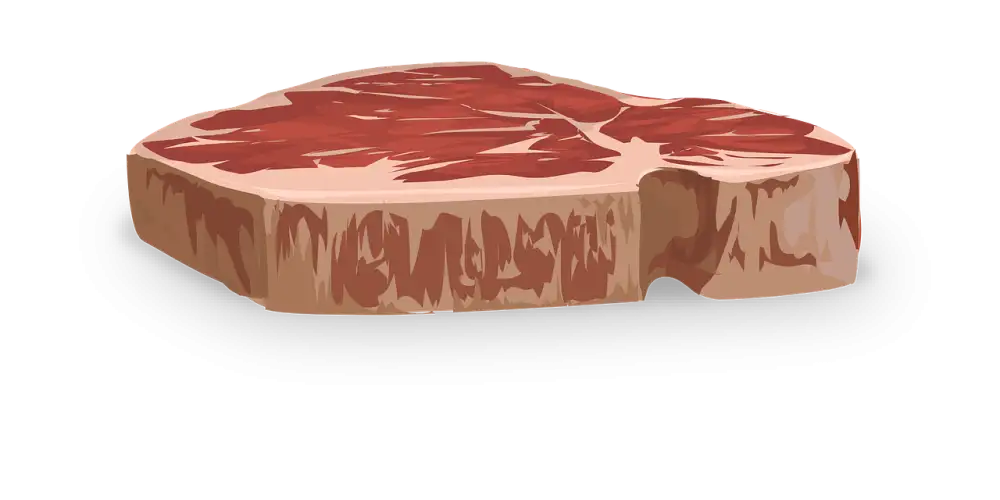Unveiling the Finest Steak Cuts: A Guide to Savoring Every Bite

- Understanding the Different Types of Steak Cuts
- Prime Cuts: Exploring the Most Tender and Flavorful Options
- Popular Cuts: A Closer Look at the Steaks Loved by All
- Lesser-Known Cuts: Unveiling Hidden Gems for Steak Enthusiasts
- Choosing the Perfect Steak Cut for Your Palate and Cooking Style
- Tips for Preparing and Cooking Different Steak Cuts
- Serving and Pairing Suggestions for Each Steak Cut
- Exploring Regional Variations in Steak Cuts
Steak is a timeless classic that has been enjoyed by food enthusiasts around the world for centuries. Whether you prefer your steak rare, medium, or well-done, the key to a truly exceptional culinary experience lies in choosing the right cut of meat. The world of steak cuts can be overwhelming, with a wide variety of options available. In this guide, we will take you on a journey through the different types of steak cuts, from prime cuts that are known for their tenderness and flavor to lesser-known cuts that offer unique textures and flavors. Join us as we unveil the finest steak cuts and discover how each one can elevate your dining experience to new heights.
Understanding the Different Types of Steak Cuts
When it comes to steak, not all cuts are created equal. Each cut offers a unique texture, flavor, and tenderness that can greatly enhance your dining experience. To truly savor every bite, it's important to understand the different types of steak cuts available.
The most common types of steak cuts include ribeye, filet mignon, New York strip, T-bone, and sirloin. These cuts come from different parts of the cow and vary in marbling, fat content, and muscle fibers.
Ribeye is known for its rich marbling and intense flavor. It comes from the rib section of the cow and is often considered one of the most flavorful cuts. Filet mignon, on the other hand, is incredibly tender with minimal fat content. It's taken from the tenderloin area and is prized for its melt-in-your-mouth texture.
New York strip is a classic choice with a balance of tenderness and flavor. It has moderate marbling and comes from the short loin section. T-bone steaks offer the best of both worlds with a tender filet mignon on one side and a flavorful New York strip on the other.
Sirloin steaks are versatile and come in various forms such as top sirloin or tri-tip. They have a good amount of marbling and offer a robust beefy flavor.
Understanding these different types of steak cuts will help you make informed choices based on your preferences. Whether you prefer a tender melt-in-your-mouth experience or a more robust beefy flavor, there's a steak cut out there for everyone. So let's dive deeper into each type to uncover their unique characteristics and how they can elevate your culinary journey.
Prime Cuts: Exploring the Most Tender and Flavorful Options
When it comes to steak, nothing quite compares to the indulgence of prime cuts. These cuts are known for their exceptional tenderness and rich flavor, making them a favorite among steak enthusiasts.
One of the most sought-after prime cuts is the filet mignon. This buttery-soft cut is taken from the tenderloin, a muscle that runs along the spine. It is incredibly tender and boasts a mild, delicate flavor that melts in your mouth.
Another popular prime cut is the ribeye. Known for its marbling, this cut offers a perfect balance of tenderness and flavor. The generous fat content gives it a rich, juicy taste that is hard to resist.
For those who prefer a more intense flavor profile, the New York strip steak is an excellent choice. This cut comes from the short loin and features a firmer texture with bold, beefy flavors. It has just the right amount of marbling to keep it tender and juicy.
Lastly, we have the T-bone steak, which combines two incredible cuts in one. With both a strip steak and a small portion of tenderloin on either side of the bone, this cut offers the best of both worlds – robust flavors from the strip and unmatched tenderness from the tenderloin.
These prime cuts are often pricier than other options but are well worth every penny for their exceptional quality. Whether you prefer a melt-in-your-mouth experience or crave bold flavors, these cuts will surely satisfy your palate.
Popular Cuts: A Closer Look at the Steaks Loved by All
When it comes to steak, there are a few cuts that have gained widespread popularity for their exceptional flavor and tenderness. Let's take a closer look at these beloved steaks.
First up is the ribeye, known for its rich marbling and intense beefy flavor. This cut comes from the rib section of the cow and offers a perfect balance of fat and meat. It's no wonder why ribeye is often considered one of the juiciest and most flavorful steaks.
Next on the list is the tenderloin, also known as filet mignon. This cut comes from the loin area and is prized for its melt-in-your-mouth tenderness. With minimal fat content, it offers a delicate and buttery texture that steak enthusiasts adore.
Another popular choice is the New York strip, which comes from the short loin section. It features a generous amount of marbling, resulting in a tender and flavorful steak. The New York strip offers a robust beef flavor with just the right amount of fat to keep it juicy.
Last but not least, we have the sirloin steak. This versatile cut can be found in various forms such as top sirloin or tri-tip. Sirloin steaks are known for their bold flavor profile and moderate tenderness. They are often more affordable than other popular cuts but still deliver an enjoyable dining experience.
These popular cuts have stood the test of time due to their exceptional taste and texture. Whether you prefer a well-marbled ribeye or a tender filet mignon, these steaks are sure to satisfy even the most discerning palates.
Lesser-Known Cuts: Unveiling Hidden Gems for Steak Enthusiasts
When it comes to steak, most people are familiar with the popular cuts like ribeye, filet mignon, and New York strip. However, for the true steak enthusiasts, there is a whole world of lesser-known cuts waiting to be discovered. These hidden gems may not be as well-known, but they offer unique flavors and textures that are worth exploring.
One such cut is the hanger steak, also known as the butcher's steak. This cut is taken from the diaphragm of the cow and has a rich, beefy flavor. It can be quite tender if cooked properly and is best served medium-rare to medium.
Another underrated cut is the flat iron steak. This cut comes from the shoulder area of the cow and has a marbling pattern similar to ribeye. It is incredibly flavorful and tender when cooked correctly. It's perfect for grilling or pan-searing.
For those looking for something different, try the tri-tip steak. This triangular-shaped cut comes from the bottom sirloin and offers a balance of tenderness and flavor. It can be grilled or roasted to perfection.
Lastly, let's not forget about skirt steak. This long, thin cut comes from the plate section of the cow and has a robust beefy flavor. It's great for marinating and grilling, making it ideal for fajitas or stir-fries.
These lesser-known cuts may require a bit more attention in terms of cooking technique and preparation, but they are well worth it for their unique flavors and textures. So next time you're at your local butcher or meat market, don't hesitate to ask about these hidden gems. They may just become your new favorite steak cuts!
Choosing the Perfect Steak Cut for Your Palate and Cooking Style
When it comes to choosing the perfect steak cut, it's essential to consider both your palate preferences and cooking style. If you prefer a tender and juicy steak, opt for prime cuts such as ribeye or filet mignon. These cuts are known for their marbling and tenderness, making them ideal for grilling or pan-searing.
For those who enjoy a rich and robust flavor, popular cuts like New York strip or T-bone are excellent choices. These cuts have a good balance of fat and meat, resulting in a flavorful steak that can be cooked on the grill or in a cast-iron skillet.
If you're an adventurous steak enthusiast looking to try something new, consider exploring lesser-known cuts like hanger steak or flat iron. These hidden gems offer unique flavors and textures that can be enhanced through marinating or slow cooking methods.
Ultimately, the perfect steak cut depends on your personal taste preferences and how you plan to cook it. Experiment with different cuts to find your favorite and don't be afraid to ask your butcher for recommendations based on your desired flavor profile.
Remember, whether you prefer a tender melt-in-your-mouth experience or a bold and hearty bite, there is a perfect steak cut out there waiting to be savored.
Tips for Preparing and Cooking Different Steak Cuts
When it comes to preparing and cooking different steak cuts, there are a few key tips to keep in mind. First, always start with a high-quality cut of meat. Look for marbling, which indicates tenderness and flavor. Secondly, let the steak come to room temperature before cooking to ensure even cooking throughout. Next, season the steak generously with salt and pepper or your favorite seasoning blend. For thicker cuts, consider using a meat thermometer to achieve the desired level of doneness. Lastly, allow the steak to rest for a few minutes before slicing into it. This allows the juices to redistribute and ensures a more flavorful and tender bite. By following these tips, you'll be able to prepare and cook different steak cuts to perfection every time.
Serving and Pairing Suggestions for Each Steak Cut
When it comes to serving and pairing steak cuts, there are endless possibilities to enhance the flavors and elevate your dining experience. For prime cuts like ribeye or filet mignon, a simple seasoning of salt and pepper can suffice, allowing the natural flavors to shine. Pair them with bold red wines like Cabernet Sauvignon or Malbec for a perfect match. Popular cuts like New York strip or sirloin can be complemented with herb butter or a rich mushroom sauce. These steaks pair well with medium-bodied red wines such as Merlot or Syrah. For lesser-known cuts like hanger steak or flat iron, marinating them in a tangy chimichurri sauce can add an extra layer of flavor. Serve these steaks with lighter red wines like Pinot Noir or Sangiovese for a delightful combination. Experimenting with different seasonings, sauces, and wine pairings will help you discover the perfect harmony between your chosen steak cut and accompanying flavors.
Exploring Regional Variations in Steak Cuts
Steak is a beloved dish that is enjoyed all around the world, and each region has its own unique take on the perfect cut of meat. In the United States, for example, the T-bone and Porterhouse steaks are popular choices, known for their generous marbling and rich flavor. In Argentina, the star of the show is the mouthwatering Bife de Chorizo, a thick strip steak that is grilled to perfection. Meanwhile, in Japan, Kobe beef steals the spotlight with its unparalleled tenderness and marbling.
In France, you'll find the iconic Entrecôte steak, which is typically served with a side of creamy Béarnaise sauce. In Australia, where beef reigns supreme, the Ribeye steak takes center stage with its juicy texture and intense flavor. And let's not forget about Brazil's contribution to the steak world - the Picanha. This flavorful cut comes from the top sirloin and is often seasoned with rock salt before being grilled to perfection.
No matter where you find yourself in the world, there will always be a regional variation of steak that will tantalize your taste buds. Exploring these variations allows you to experience different flavors and cooking techniques that have been perfected over generations. So next time you're craving a delicious steak, consider trying a regional specialty for a truly unique culinary experience.
In conclusion, the perfect steak cut can truly elevate your culinary experience. Whether you prefer a tender and flavorful prime cut, a popular cut loved by all, or a lesser-known hidden gem, there is a steak cut out there to suit every palate and cooking style. By understanding the different types of steak cuts, choosing the right one for your preferences, and utilizing proper cooking techniques, you can savor every bite of your steak. Don't forget to experiment with serving and pairing suggestions to enhance the flavors even further. So go ahead, explore the world of steak cuts and indulge in the ultimate dining pleasure.
Published: 01. 12. 2023
Category: Food



